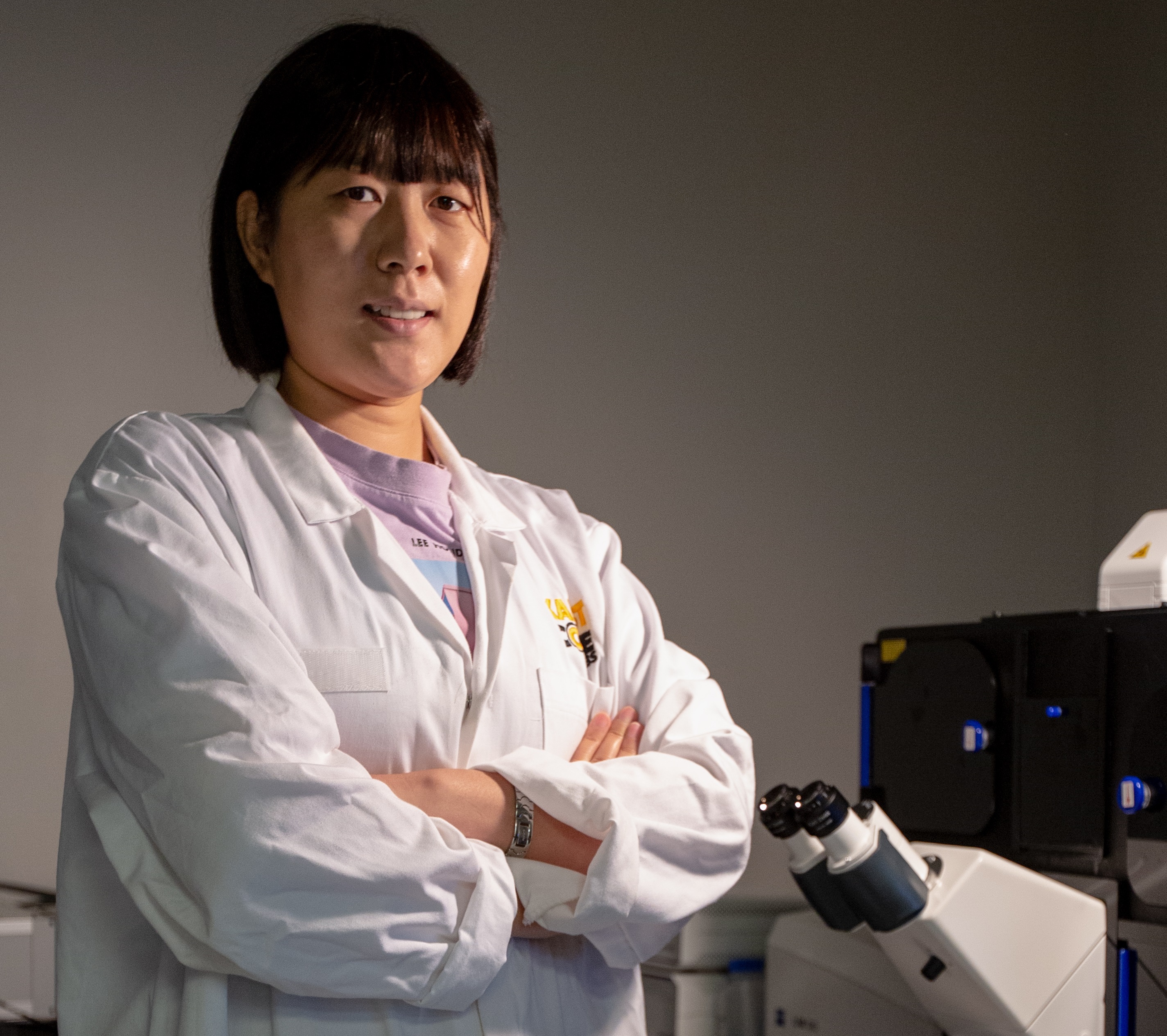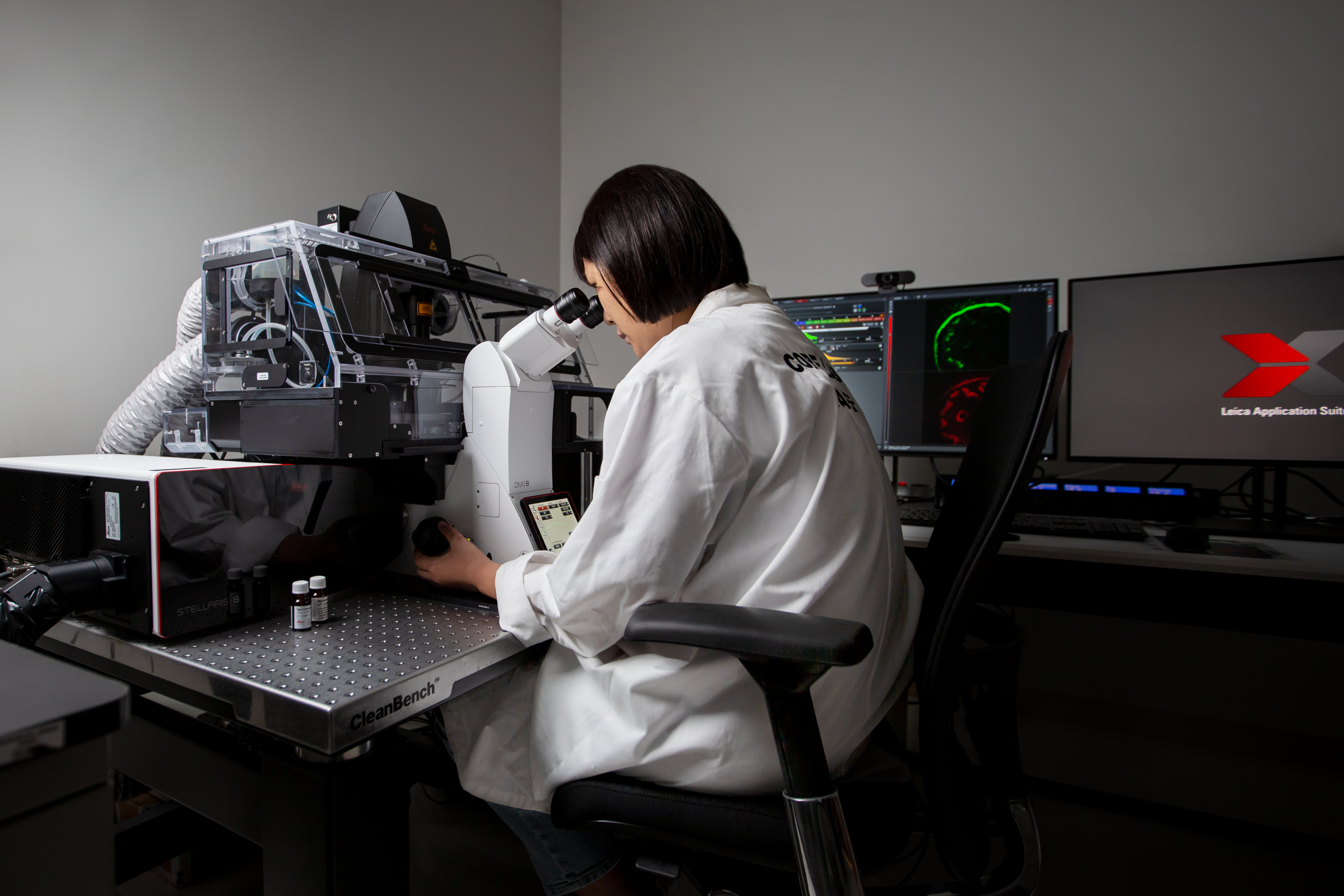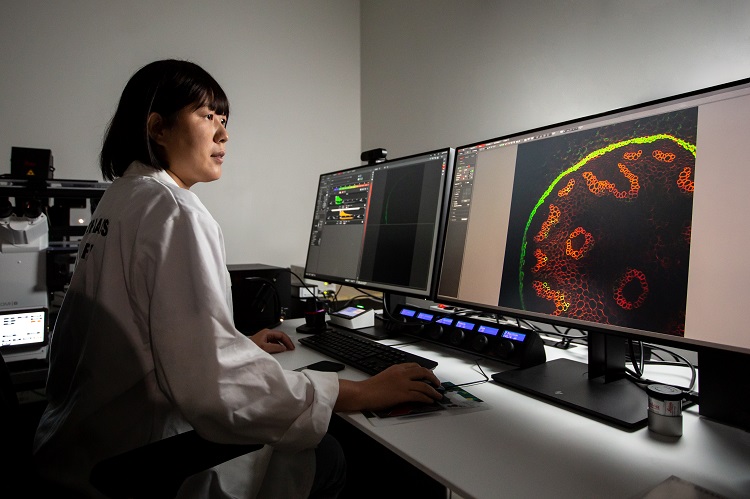By the Imaging and Characterization Core Lab team and EMG
Saudi Arabia is focused on scientific discovery for the Kingdom’s future. Senior technical specialist Ji Li, a new appointee to the KAUST Imaging and Characterization Core Lab, leads the charge by training scientists and students to use some of the world’s most advanced optical microscopes, with great implications for scientific understanding.
Li comes from Heilongjiang Province, China, and her work centers around showing students and researchers how to study plant and mammalian tissues, cells, subcellular structures and dynamic process imaging through the use of cutting-edge technologies. These include a widefield microscope, a fluorescence microscope, a laser confocal microscope and a super-resolution microscope. The microscopes are able to identify and analyze the behaviors of the tiniest parts of a cell, including lysosomes, a cellular component that fascinates Li.
“The lysosome is essentially the cell’s waste disposal system,” she noted. “Lysosomes remove old cells or parts of a malfunctioning cell—they can even swallow up foreign invaders, such as bacteria, and destroy them. They’re a fundamental part of cell health and survival, and that means they’re fundamental to our overall health.”

Senior technical specialist Ji Li uses cutting-edge microscopes in the KAUST Imaging and Characterization Core Lab to carry out her work studying and analyzing the smallest parts of cells. Photo by Khulud Muath.
World-class cellular research
The laboratory technologies Li uses enable her to photograph, study, culture and nourish cells in Petri dishes, meaning she can research how specific cells act and even create 3D computer images of them. Li’s work enables a wider scope of research and development in important areas, including cancers and degenerative diseases like Parkinson’s or Alzheimer’s—major focuses for Li throughout her career.
“As a seasoned research technician and lab manager, I have spent several years researching these kinds of diseases at a cellular level,” she said. “I believe that the sample preparation stage is the key to successful imaging, which can even be used to visualize antibodies within the immune system (called ‘immunocytochemistry’)—this is how chemists can anatomically visualize the location of a specific antigen and antibody. Samples that can be analyzed include blood smears, aspirates, swabs, cultured cells and cell suspensions.”
“If we can understand more about cell health and cell degeneration by using the cutting-edge technologies in the Core Labs, we will be a step closer to understanding how degenerative disorders develop and progress,” Li explained. “The technical capabilities at KAUST give me the opportunity to teach other researchers and students how to advance this kind of knowledge in the field of neuroscience.”

The highly sophisticated technologies available in the University’s Imaging and Characterization Core Lab (IAC) and the calibre of IAC’s scientists drew Ji Li to join KAUST. Photo by Khulud Muath.
The technologies taught and deployed in the Core Labs are at the pioneering edge of cell imaging and use sophisticated illumination systems that facilitate high magnification at the micron-scale resolution level. By utilizing micron-scale resolution optical tomography, scientists have the capacity to map out an entire brain in 3D at the cellular level, with high contrast and speed.
“By gaining the ‘perfect’ image of cells, it becomes possible to ascertain the specific function of proteins in cancers and degenerative disorders,” noted Li.
Pioneering neuroscience
By recruiting world-class science and technology researchers like Li, Core Labs and Research Infrastructure is making a lasting contribution to Saudi Arabia’s scientific community and the nation’s research and development capabilities. Li’s role is crucial as the Kingdom seeks to build a skilled workforce of innovators, researchers, academics, inventors and entrepreneurs.

Ji Li utilizes advanced optical microscopes to visualize high-quality images of cells, enabling discoveries to combat cancers and degenerative disorders. Photo by Khulud Muath.
“Through training the KAUST research community, collaborators and industrial partners, my work at the University will inspire innovations in neuron research that may change our understanding of the human brain; human diseases; and how cells from plants and the animal kingdom can help mankind’s scientific endeavors,” Li said.
“The work being done in the Core Labs is why I moved halfway around the world,” she continued. “Every day when I come to the office, I meet some of the world’s brightest minds in neurological research. That’s why I chose the Core Labs.”

